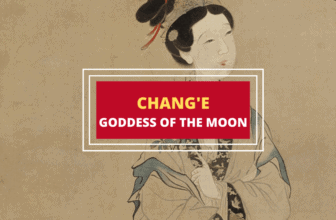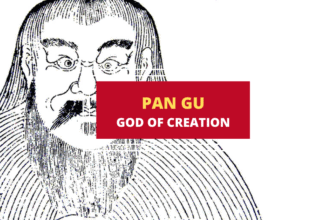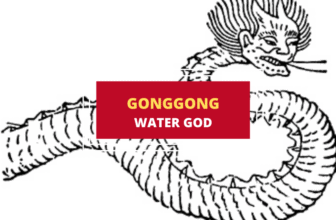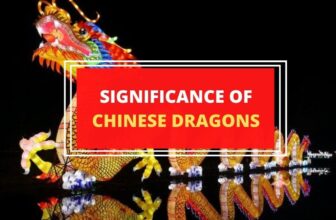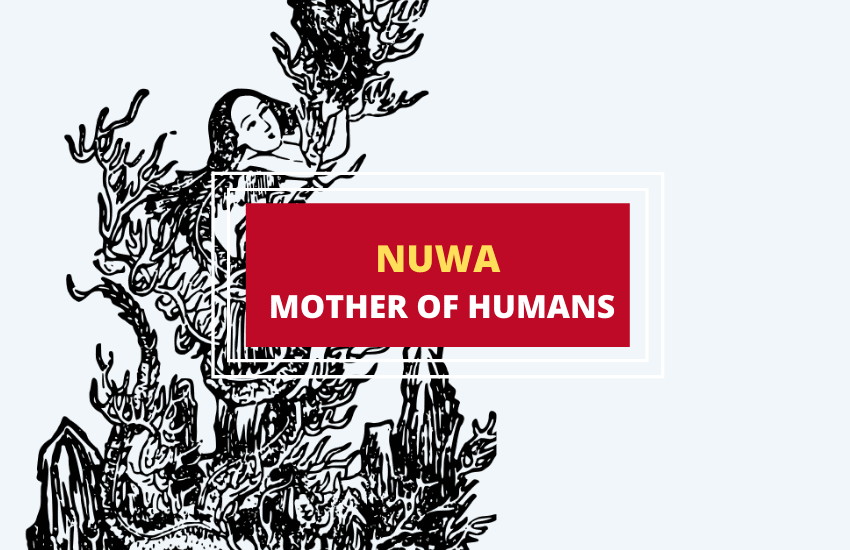
Table of Contents
Mythological gods not only represent religious beliefs, but also virtues and values of certain cultures. One of the earliest Chinese deities, Nuwa is most known for bringing back order in the universe after its near destruction. Here’s what to know about her significance in Chinese culture and history.
Who Is Nuwa in Chinese Mythology?

Nuwa is the Great Mother of humans and one of the most important primeval goddesses. In some texts, she’s mentioned as one of the Three Sovereigns, the mythical rulers in ancient Chinese history, along with Fuxi and Shennong.
Sometimes, Nuwa is referred to as Nu Kua or Nu Gua. She’s described as having a human head and a serpent body, and often depicted with her brother and husband Fuxi, with their tails intertwined. She holds either a carpenter’s square or the moon with the divine frog inside.
Nuwa is often involved in creation and flood stories, and is known for repairing the broken sky and creating human beings. Nuwa and Fuxi are regarded as the parents of humanity and the patrons of marriage. In different ethnic groups, the couple may only be called as a brother and his sister, or even have different names.
Nuwa Goddess vs. Nu Wa (Ching Wei)
The Chinese goddess Nuwa shouldn’t be confused with another mythological character of the similar name, also known as Ching Wei, who was the daughter of the Flame Emperor, Yan Di. Ching Wei drowned in the sea and never returned. She was changed into a bird, who was determined to fill the sea with twigs and pebbles. Her story has some parallels with the tales of Nuwa, but it’s no doubt a separate myth.
Myths about Nuwa
There are different myths about Nuwa and most of them revolve around the story of brother-sister marriage, the goddess creating human beings from mud, and Nuwa mending the broken sky. However, these stories are often mixed up, and different versions narrate different tales of what happened next.
- Nuwa Created Humans by Molding Mud
For the Han people, Nuwa created human beings from yellow earth with her hands, the way a ceramic artist would make statues. When the earth had been created, no humans existed yet. The goddess took clumps of yellow earth and molded them into human figures.
Unfortunately, Nuwa didn’t have enough strength to finish her creation with her bare hands, so she took a cord or a rope, and dragged it through the mud, then lifted it out. The drops that fell down on the ground became humans. Realizing that they might die, she divided them into men and women so that they could bear children.
Some version of the myth says that the clay figures molded from Nuwa’s hands became leaders and rich aristocrats of society, while the ones that created with the use of cord became common people. There’s even an account that say she used both yellow earth and mud, in which the former became the noble and rich, while the latter turned into commoners.
- The Brother-Sister Couple Myth
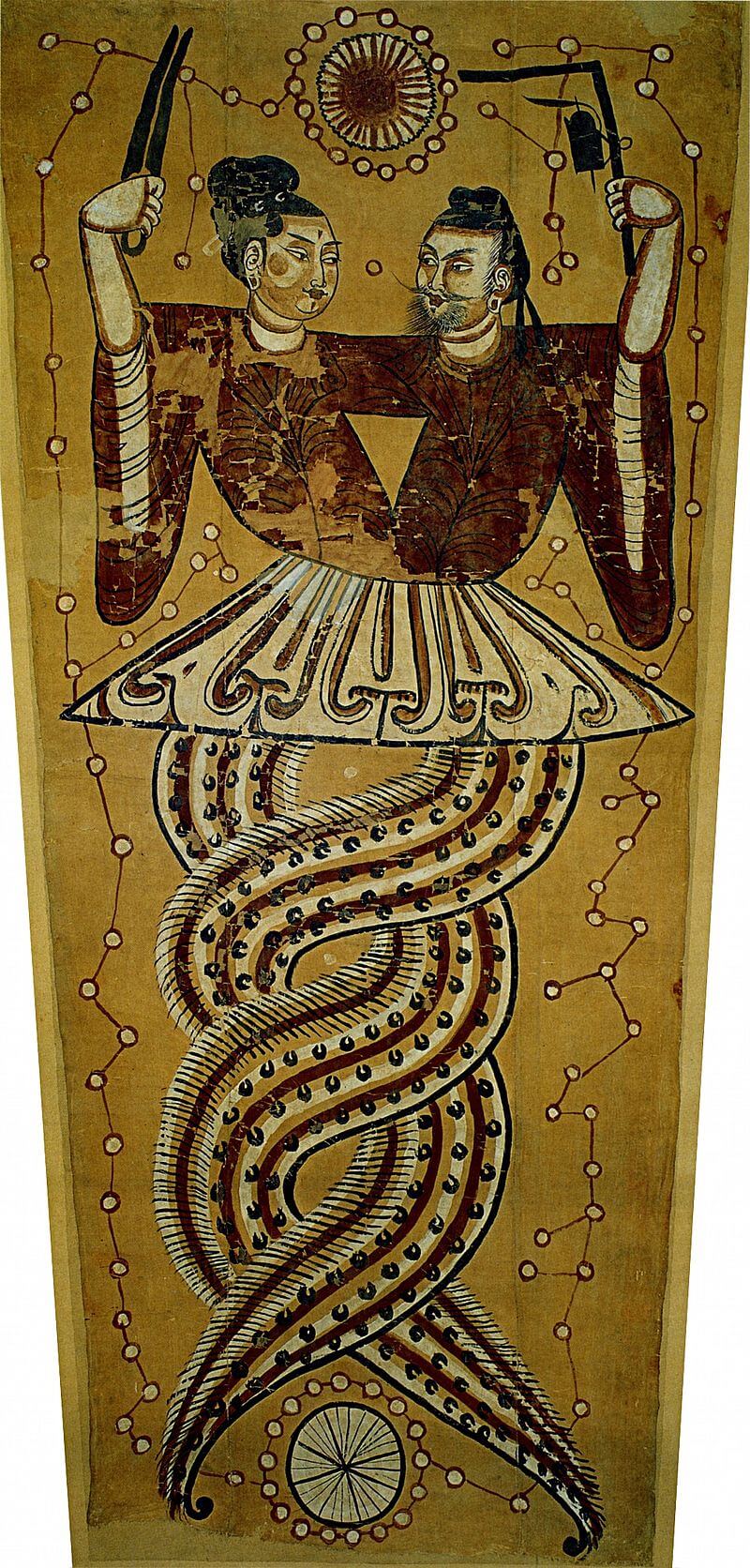
After surviving the great flood in their childhood, Nuwa and her brother Fuxi were the only humans left on earth. They wanted to marry each other to repopulate the world, so they asked the permission from the gods through prayers.
It’s said that Nuwa and Fuxi agreed to get married if the smoke from the bonfires they made came together into a plume instead of rising straight to the sky. Some stories say that signs included restoring the broken shell of a tortoise, threading the needle from a long distance, and so on. All these things happened perfectly, so the two got married.
After they got married, Nuwa gave birth to a ball of flesh—sometimes a gourd or knife stone. The couple divided it into pieces and scattered them in the wind. The pieces that landed on the ground became human beings. Some stories combine the tale of Nuwa molding mud into human beings, and with the help of Fuxi, they scattered the pieces into the wind.
- Nuwa Mending the Broken Sky
In this myth, one of the four poles supporting the sky collapsed. The cosmic catastrophe was caused by the war between the gods Gonggong and Zhuanxu, where the former butted into the sky pillar, the Mount Buzhou. Unfortunately, it caused great disasters such as floods and fires that couldn’t be extinguished.
In order to patch the tear in the sky, goddess Nuwa melted five colored stones from the river, and cut the legs off a huge tortoise for support. She even
used ashes of reeds to stop the flood. When her repairs were done, she set out to bring life back to earth.
In the Taoist text Liezi, the chronological order of these stories is opposite. Nuwa mended the tear in the sky first, followed by Gonggong’s damage a few years later. In some accounts, Nuwa defeated Gonggong to save the people, but some stories say that it was Zhuanxu who defeated the black dragon.
Symbolism and Symbols of Nuwa
In Chinese mythology, Nuwa is associated with creation, marriage, and fertility. When depicted with Fuxi, the couple is regarded as the patrons of marriage. It’s thought that the goddess encouraged men and women to marry each other in order to have children, so that there wouldn’t be a need for her to create humans from mud.
The name Nuwa and her symbols come from the words melon or gourd, which are symbols of fertility. In primitive cultures, the gourd was regarded as the ancestor of humans. No wonder she’s also called the Great Mother of humans.
Nuwa and Fuxi are even thought to be the earlier representation of yin and yang, in which the yin stands for the feminine or negative principle, while the yang represents the male or positive principle.
In Daoist belief, she’s referred to as the Dark Lady of the Ninth Heaven, where the ninth heaven is the highest heaven. In some illustration, Nuwa is depicted holding a carpenter’s square, while Fuxi holds a compass. These instruments represent the order created by establishing the harmony of the universe or rules of the world.
Nuwa in Chinese Culture and History
Nuwa’s name first made appearances in the writings of the late Warring States period. By the time of Han period, the goddess began to be paired with Fuxi, and they were seen as a married couple in myths.
- In Literature
The earliest mention of Nuwa can be found in the religious poems in Chuci, also known as Songs of Chu—particularly in Shanhaijing or Classic of Mountains and Sea, and Tianwen or Questions to Heaven. In these texts, Nuwa is seen as an independent deity—and not as a creator.
In these records, stories about Nuwa were vague, and they received different interpretations. Some say that the goddess’ gut strangely turned into ten spirits, and each took different routes and settled into the wilderness. Unfortunately, there’s no further explanation about her, the gut spirits, and any mythological event after this.
By the Han period, Nuwa’s mythical role and achievements became clearer and more detailed. In Huainanzi, the story about her mending the sky was revealed. In ancient writing Fengsu Tongyi, also known as Popular Customs and Traditions, the myth about her creating humans from yellow earth emerged.
By the Tang dynasty, the story of brother-sister marriage as the origin of humanity became popular. It was narrated on the text Duyizhi, also knownas A Treatise on Strange Beings and Things. By this time, Nuwa lost her independent status as a deity as she became associated with Fuxi as his wife, and the two were presented as a married couple.
- In Chinese Topography
It’s said that the eastern land of China is low while the west is high because goddess Nuwa used the shorter legs of the tortoise to support the east, and the longer legs to support the west. Some also link the colorful clouds with the colorful stones the goddess used in repairing the broken sky.
- In Culture and Religion
The dynasties of Song, Ming, and Qing promoted worship for Nuwa, and feudal governments even offered sacrifices to her. In 1993, the local government revived folk belief and folk culture, so they rebuilt Nuwa’s temple at the Renzu Temple complex. In 1999, Nuwa’s temple was rebuilt in Hongdong County, Shanxi Province. Myths about the goddess have been told again, and many continued to worship her.
Importance of Nuwa in Modern Culture
Nuwa remains an important goddess in some regions, and many go to her temples to worship her. March 15 is said to be her birthday, and the locals sing sacred songs and perform folkdances for her. Women bring embroidered shoes to the goddess as a form of sacrifice, as well as burn them with paper money or incense, in hopes of getting her blessings for health, happiness and safety.
The brother-sister couple is also worshipped as Nuomu and Nuogong by the Tujia, Han, Yao, and Miao ethnic people. Some express their belief of ancestors and gods through these myths, while others regard these stories as a reflection of their local culture.
In popular culture, the 1985 film Nuwa Mends the Sky tells the myth of Nuwa creating humans from mud. The goddess is also woven into the plot of The Legend of Nezha, as well as on the animated cartoon series Zhonghua Wuqian Nian, or The Five-Thousand Years of China.
In Brief
One of the most powerful primeval goddesses in Chinese mythology, Nuwa is known for mending the broken sky and creating human beings from mud. In modern China, many ethnic groups worship Nuwa as their creator.




